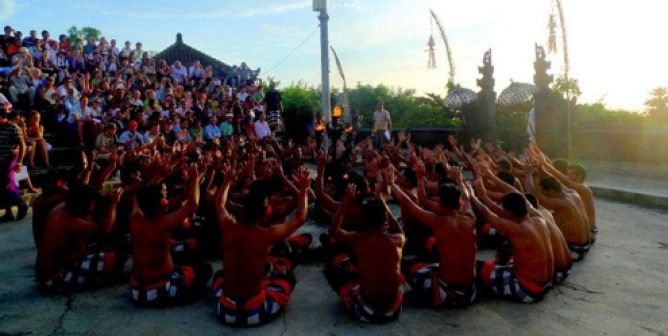SEARCH
Heritage
Posted in: Cultural, Destination by admin on March 22, 2010
-
Arts Performance
Most of the performing arts in Indonesia are believed to have its beginning in religious worship. Every movement of legs, elbow, hand and fingers expressed the complexity and vibrant of life. Performing arts and festivals in Indonesia are not only based on folklore, but most of them have developed in the courts of former kingdoms and part of religious ceremonies. Even today, many dances are considered sacred and traced back to their early spiritual associations. For example, popular folk dances still display strong magic associations, as for instance the Kuda Lumping (Horse Dance).
Indonesia is home to many traditional dance styles. We invite you to study and enjoy the range of types and styles of the dances that reflects the soul and traditions of the various ethnic groups. The classical dance traditions of Java and Bali have attracted worldwide attention.
In Java, classical forms blend native traditions with stories and dance techniques from India. The most significant of the Javanese court dances are the Bedaja and the Serimpi. Slow and restrained, women dancers move solemnly to the accompaniment of the gamelan and choral singing. In Sumatra, Maluku and most of other islands are characterized by their gracefulness and charms, which are entirely different from the non-gamelan musical accompaniment.
Shadow Puppets have been at the core of Javanese theater for more than 1,000 years and are still the most popular form of Shadow Theater. In Shadow Theatre, the Puppeteer manipulates leather figures so that their shadows dance across a white screen. Performances typically begin in the late evening and end at sunrise.
Bali has a rich tradition of dances that are part of religious rituals. Dances are held in temple courtyards and coincide with religious feasts. Women dance the sacred rejang to evoke beauty. The legong is Bali’s best-known dance where two or three young girls perform the dance, which tells fragments of stories from the life of Prince Panji.
-
Historical Place
Indonesia covered a total area of 1,919,440 sq km that offers wonderful places of interests including few extraordinary heritage of Indonesia. The historical places of Indonesia on the whole give an idea and insight of the cities past, its culture and the lifestyle of the people of another era. The famous landmarks and the popular historical places of Indonesia create a mood of the place and the period.
Hindu temples of Prambanan and the Dieng Plateau, the Palace of Sultan in Surakarta and Yogyakarta, the Maimun Palace of the Sultanate of Deli in Medan, the Hall of Justice in Bali, ruins of ancient fortresses and museums, mosques and churches are steeped in folklore.
You have to believe that almost every city in all regions throughout Indonesia have historical place to tell. The World Heritage UNESCO even listed few places in Indonesia such Borobudur Temple Compounds, Prambanan Temple Compounds, and Sangiran Early Man Site.
Sangiran in Central Java is 48 km2 archaeological excavation site where on 1934 Gustav Heinrich Ralph von Koenigswald the anthropologist examine the area. He found Pithecanthropus erectus (Java man) as part of the species Homo erectus.
40 kilometers northwest of Yogyakarta, you can find Borobudur Temple that located in elevated area between two twin volcanoes, Sundoro-Sumbing and Merbabu-Merapi, and two rivers, the Progo and the Elo. To the local myth, the area known as Kedu Plain (Javanese ’sacred’ place) due to high agricultural fertility. Beside Borobudur, there are other temples in the area, the Prambanan Temple, Pawon Temple and Mendut Temple, lined in one straight line position. It might be accidental, but the temples’ alignment is in conjunction with a native folk tale that a long time ago, there was a brick-paved road from Borobudur to Mendut with walls on both sides.

